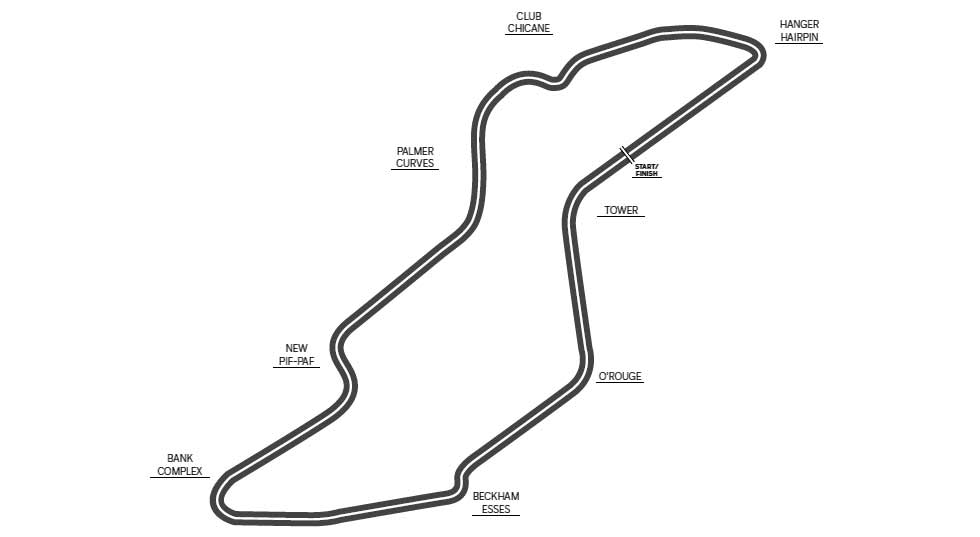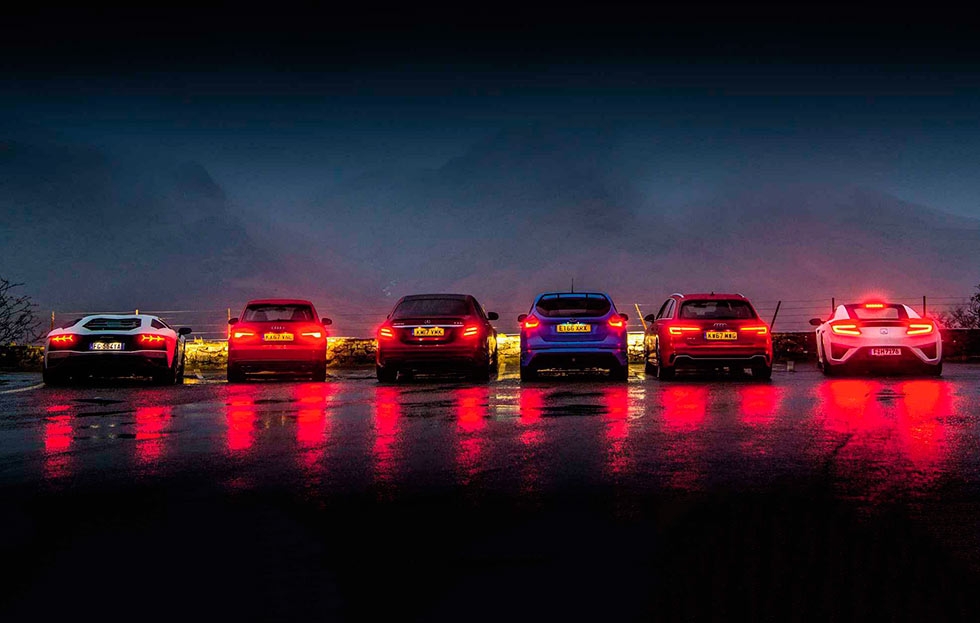
The four wheel-drive mega-test. Four-wheel drive is becoming the de facto drivetrain choice for many of today’s performance cars. We gather half a dozen very different models with six very different four-wheel-drive set-ups to determine if the technology finally offers a genuine performance advantage.
STORM FOURS Wales unleashes its worst weather – perfect for putting the diverse four-wheel-drive systems of six very different cars to the test as we ask the question: is the future of the performance car all-wheel drive? Text by Adam Towler and Photography by Aston Parrott.
It’s Pitch Dark, distressingly early, and unremittingly wet as I settle the invoice at our less than salubrious overnight accommodation. John Barker suddenly appears alongside me at the reception desk. ‘Look,’ he says, rotating his laptop to reveal the video he’s playing. ‘I’ve found this film that shows how Honda’s SH-AWD set-up works.’ It’s probably one of the more savoury pieces of content that’s been streamed within these yellowing, dank walls.
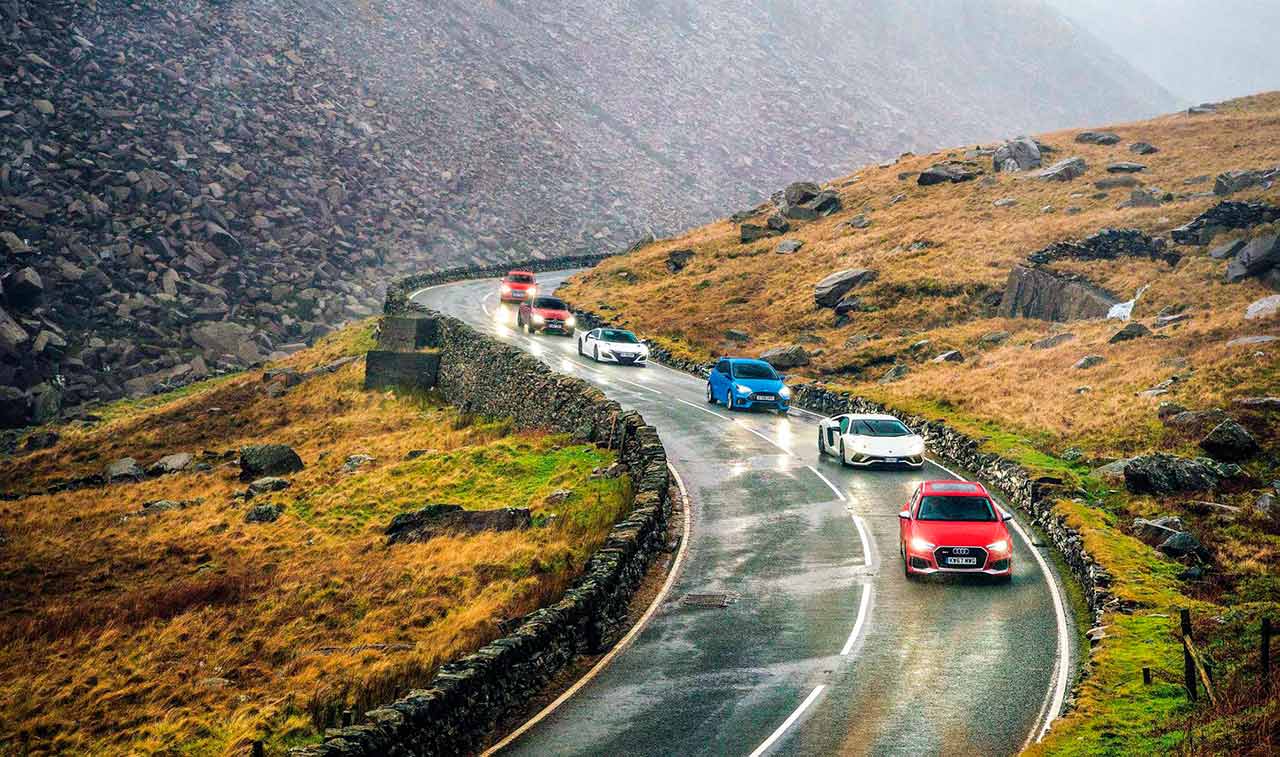
We are momentarily absorbed by this animation, because understanding the layout and workings of modern four-wheel-drive systems isn’t straightforward, steeped as they are in technology, mythology and oft-repeated untruths. Four-wheel drive performance cars have evolved considerably over the years, from all-weather one-trick ponies, through those wonderful – and sometimes frisky – Mitsubishi Evos, to machines with the in-vogue tech of the moment. Four-wheel drive can now be a very active ingredient in a broad and dynamic handling repertoire, and is available in a multitude of forms that offer very different outcomes.
On top of this there’s that common miscomprehension that four-wheel drive gives you more outright grip, whereas traction is a far more accurate description, and even that most famous four-wheel-drive marketing brand, quattro, isn’t as simple as it first appears. We have two quattro systems in this story alone – the Haldex arrangement in the S1 and the Crown Gear set-up in the RS4.
While it’s one thing to describe how the systems work – which we will throughout this piece – it’s another to actually feel what they do and how they impact upon the driving experience. Which is why evo is in Snowdonia, in January, with six intriguingly diverse cars – each with both axles driven in some form – and two days and a fair few miles ahead of us. As I glance out into the car park, I see photographer Aston Parrott has already fired up the quattro (S1 flavour) and is waiting pointedly at the exit, impatient to try to catch that precious light of sunrise that’s catnip to all snappers.
In fact, any hope of some ethereal dawn light will be completely in vain. Instead, none of us will be able to remember seeing so much rain as over the next 48 hours, as Wales is hit by a deluge of meteorological madness. That said, while this might make for one of Parrott’s toughest assignments ever, we did want a stern test of the current all-wheel-drive performance car set, and mother nature has certainly provided that.
I jump into the Audi RS4 Avant first, a car we’ve so far only driven close to its Ingolstadt home. If ever a car was made for getting around ludicrously swiftly in these conditions, it’s the RS4 – indeed, it was my choice last night when we all converged on our meeting point. As the miles passed with just the slightest flutter of wind around the Audi’s wing mirrors, I thought about how Barker might be getting on in that 16th century Spanish instrument of torture that Lamborghini often likes to fit as a bucket seat, or what the NSX’s garish blaze of dashboard illumination might look like somewhere on a dark Welsh night. Now we’re all in one convoy, the big AMG up front, then the Audi S1, the Ford Focus RS, the NSX, the Aventador S, and finally the RS4. Two days getting from north Wales to south, in atrocious weather, is go.
Right at this very moment, climbing the Llanberis Pass, I’m pretty glad to be snug inside the RS4. Wipers on their fastest setting, an outline of looming mountains just becoming visible in the murk and first light, I track the Aventador in front, a bow wave of water shock-blasting from its wheels and onto the slate walls, their jagged surfaces perilously close to extravagant Italian flanks like gladiatorial spikes ready to impale the careless. SW1 this is not, and yet the Lambo appears to be holding its head high, singing its inimitable tune as only it can. I had forgotten, perhaps, the sheer depth, volume and sweet tonality of the V12, but here it is, a yowl, a real animalistic, yearning yowl that reaches right down into your soul and reaffirms why big, naturally aspirated V12s and supercars really are some of the finest things in life. When we reach the top, the Lambo’s driver looks reasonably unruffled: would he be quite so cool had the Lambo been a rear-drive model?
Tempted as I am by the Avantador’s beckoning scissor door, I nevertheless decide to take refuge from the rain and wind in the E63 S. On the way, I jog past James Disdale, newly vacated from the Merc, who shoots me a look from underneath the dripping leading edge of his anorak that suggests the mean Mercedes has made a considerable impression. The twin-turbo V8 ka-booms into life and, for me at least, the sheer violence of the E63’s acceleration never wanes. What seems inconceivable pace for a large, upright, two-ton saloon never becomes mundane, never loses its shock value. Whereas the RS4 had flowed down the road, occasionally distracted by standing water, the AMG feels like piloting a Royal Navy destroyer down the Thames. It bludgeons its way through puddles, clawing furiously at the road’s surface to keep everything moving forwards with a manic determination not to be deflected off line. Arguably, the E63 has the most to gain from being capable of distributing torque to all four corners, because the implications of deploying 604bhp to just two rear wheels in these conditions are pretty obvious.
The AMG finds tremendous traction, but all of us find that what it can’t do is disguise its bulk. Dizzy describes its exit from slow-speed corners as ‘untidy’ (oversteer followed by a rapid deployment of drive to the front axle to pull the car straight), which is inevitable given the physics at work. The firm, rather brittle ride (not shared by the non-S E63, it must be said), particularly in the car’s more aggressive settings, and its very quick steering ratio feel like devices to disguise the weight. Having said that, stick to a slow-in, fast-out approach and the E63 S is sheer dynamite across the ground, and a fine example of what adding four-wheel drive to a traditional recipe can achieve. Quite simply, it’s hard to imagine Mercedes making this car without 4Matic+. With 627lb ft of torque it would be a slave to the ESP system if rear-drive only; as it is, you can have extraordinary confidence in it.
Back in the RS4 and some food for thought: Audi offered us two cars for this test, one with and one without the Dynamic Ride Control adaptive damping that was fitted to that first new RS4 we tested in Germany. We tried the one without this £2000 option and it was a serious disappointment. Its unsettled ride was at odds with the car’s erstwhile ability to play the serene GT-car on demand, and more than a few of my colleagues questioned where I’d left my marbles on that trip to Ingolstadt. With DRC, the RS4 is transformed, thankfully, so if there’s one thing to remember, don’t, whatever you do, buy a new RS4 without ticking that box. Needless to say, it’s the DRC-equipped car we have here.
After his first stint at the wheel, Barker begins his RS4 love-hate relationship: ‘It’s very appealing, initially. Sounds pretty good – growly and characterful – goes very well, and it all feels very polished and grown-up inside. It’s not very distinct though, is it? The arches are square-cut but quite subtle, and the corporate nose is hard to make much more aggressive, although they have tried.’
Remember the one about four-wheel-drive Audis understeering? Was that the nature of the original quattro system, with its crude, fixed torque split, or the fact that Audi slung the entire engine block north of the front axle? Or both, perhaps? It wasn’t long ago that I had the opportunity to drive a B7 RS4 again – that first V8-engined version – and while it was a lovely thing, I’d forgotten just how nose-led the handling balance was once the car settled into a corner. Fast forward to today, and the latest RS4, with its Crown Gear system, is nothing of the sort. Like its RS5 relative, you can sense the rear axle playing a greater part as the corner opens out.
What really sets this RS4 apart from its forebears is the rear Sport Differential, which is standard on UK cars. With this set to Dynamic, the RS4 feels appreciably more neutral and often surprisingly tailhappy. The drawback is that in extremis you’re never really sure what you’re going to get. Sometimes there’s an initial phase of understeer to work through, another time just a hint of oversteer. Yet on a third occasion it’s easy to find the tail swinging so wide that a full armful of lock is required, and, very soon afterwards, a determined winding back of the steering if the front wheels aren’t to bite and spit the car off the road the other way.
Our convoy is moving in a southerly direction now, and the roads are opening out into fast, sweeping curves spanning bleak-looking moors barely visible in the mist. I think I’m setting a reasonably swift pace until I check the rear-view mirror and spot a small, red car flitting impatiently around behind me. Sure, Barker is a legendary pedaller, but that little S1 has clearly got some serious pace about it, and while I’m constantly on edge worrying about the omnipresent patches of standing water, the S1’s driver seems completely unfazed. When we come to a halt, I find out why. ‘Chasing you in the RS4, I could see the allowances you were making for the lack of turnin bite, the avoiding of standing water, the early braking,’ says JB. ‘The S1 felt lithe, responsive, planted, with great ride, composure, grip and traction.’
Essentially, the benefits of a light car, as ever, are not to be underestimated. The ubiquitous ‘on demand’ Haldex system allows the S1 to deploy all of its considerable torque with almost no drama – there’s none of the wheel twitching and scrabbling a front-driver would be displaying in these conditions, and while Haldex remains one of the more pragmatic systems, shunning tailout theatrics, its reactions have come a long way since its early days. So much so that Barker is after more power, as if 228bhp in such a small car isn’t enough. Nice six-speed manual ’box too, and the cabin remains tactile and tasteful, even if the exterior is blink-and-miss-it mild.
Talking of manual gearboxes, a stint in the Focus RS follows. About to go off sale, it remains an enigma. On paper it has everything we’ve ever wanted from a Ford hot hatch: the power figure, the badge, all-wheel drive, Recaro seats, a manual gearbox – torque vectoring with the ability to drift, for heaven’s sake… And yet, for a hatchback, it is also a bit porky (we’ve seen nearly 1600kg on our scales) and has a ride quality that even in the softest setting is aggressively firm. But the Focus needs that spring rate to support its considerable mass on a challenging road.
What really sets the Focus apart from its four-wheel-drive hatchback rivals is that it makes it very obvious it’s an all-wheels-driven car – in fact, it often feels more rear-wheel drive than front. A Golf R feels front-driven much of the time – because it is – and neutral at most, but even a gentle flick through a fast curve has the Ford’s rear axle beginning to rotate around a central axis, and when the roads get really slippery it can start to feel surprisingly edgy at times, coupled with the front tyres torque-steering over uneven surfaces. The winter tyres on this particular car probably exaggerate that characteristic further still, offering an extra degree or two of squidge to any given input.
‘It’s hugely entertaining, if ultimately rather an overly contrived machine’ is Disdale’s lukewarm verdict as we shelter within one of the cars. The RS is a car, as ever, that really splits opinion, because Barker is much more of a fan, finding it ‘confidence inspiring’ and enjoying the ‘grittiness’ of the feedback through the wheel, albeit wishing too that it had more ‘give’ to allow it to breathe with the road in a more effective fashion. I get that side of it too, so we settle on an amicable difference of opinion as, outside, Parrott looks increasingly like a drowned rat and his cameras start to give up the ghost.
It’s time to decamp to mid Wales, and at last the rain eases off and the puddles begin to become less lagoon-like. Time for the Lamborghini. We are around an hour from our final photographic location of the day, and it’s almost dark. While the rain has subsided to little more than a drizzle, murky brown water streams over the Aventador’s roof and A-pillars at speed, occasionally swatted aside by the swipe of a giant windscreen wiper.
Heading swiftly to the Elan Valley, I feel like I’m leading a rebel alliance formation in the Millennium Falcon. Periodically, I catch a glimpse of five pairs of dazzling lights behind, partially obscured by the Aventador’s engine bay slats and the active rear wing, which rises up and blocks much of the rearwards visibility at speed. Clearly you’re not expected to be overtaken at the wheel of an Aventador S.
A rational mind can pick a great deal of holes in this car. The squeaks and rattles inside the cabin of this 6000-odd-mile press car are hardly confidence inspiring, and the design of the dashboard is not ageing well, certainly to these eyes. The infotainment system appears to have come from an Audi of the previous millennium, while the crudeness of the USB socket has us in stitches of laughter. At this precise moment, what I’d really value is a pair of effective headlamps, but while the dipped beam is crisp enough, main beam would be amusingly ineffective for a supermini, let alone a 200mph-plus car. Then there’s the single-clutch automated gearbox, a relic of a supercar era two or three generations back – its shifts in Strada mode are infuriatingly leisurely, although the subtle throttle lift required even at full pelt is at least some form of car-driver interaction.
But come on: you don’t expect me to judge a car with a V12 that revs out to 8500rpm on such a mundane basis, do you? Frankly, I couldn’t care less if the Aventador S came with a dog-eared road atlas for a satnav and the entire dashboard disintegrated when you so much as looked at it – this car is a reminder of what it is to have a passion for cars. I absolutely adore it. Everybody, and I mean everybody, loves the Lambo. Some, like supercar-averse Disdale, aren’t converted until they drive it, then sort of glow quietly with deep-set satisfaction; others, like the cashier girl when we stop for fuel (the Lambo loves a drink, unsurprisingly) have their day made merely by its presence. In Pearl White with quite exquisite tobacco-coloured leather trim, it’s like a superstar soprano from the Milan opera singing in a local Welsh inn, charming the locals and mucking in by making the sandwiches. Its voice is strong, but its spirit is even stronger.
A V12 Lambo needs that initial intimidation factor, and through its size, power and sheer volume, the Aventador S certainly possesses that. But it doesn’t last long. Natural, accurate steering, welljudged damping and a sense of agility bolstered by the S’s rear-wheel steering soon breed a guarded sense of confidence, which all-wheel-drive traction fosters.
The individual Ego mode is best, with dampers and steering set to Strada, and the drivetrain to its noisy, most responsive, Corsa setting. So configured, you can hustle the Aventador more than you’d imagine, listening to its feedback, but all of us are clear on how you tend to drive it hard up to a certain point, but always with a good margin in hand. No one wants to feel the weight of that giant engine begin to move, the ashen-faced moment when a tank slapper gathers momentum…
We convene, eat, drink and dry out at our pub digs for the night, and the conversation is – funnily enough – 90 per cent about the glorious Lambo. Much of that is spent laughing about its foibles, the remainder how it might be the best tonic ever invented for a miserable January.
The NSX is also winning fans at a rapid rate. Dizzy reckons it accelerates like a Buccaneer off the Ark Royal’s catapult, while reflecting that it’s ‘a fine example of what electric motors properly done can do for true drivers’ cars’. Barker agrees, while deliberating between ham and eggs or lasagne with chips, although his stint in the Japanese supercar didn’t begin too well: ‘We didn’t get off to a great start: I turned sharply out of the car park and the rear stepped out! It did it again soon after, though this time swinging keenly into a soaking right-hander onto a cattle grid. That second time it felt like the rear was too soft. Later on I discovered the mode dial, and with the sportiest setting dialled up, all such concerns vanished.’
Overall, though, he’s a big fan: ‘The new NSX is a fine thing, a lovely blend of internal combustion and electric, mostly because it’s a very sorted and appealing junior supercar.’ I only had a brief drive in it today, but after initially worrying it all felt rather synthetic, I began to warm to it immensely, and not just because Dizzy left the heated seat on full blast.
The weather has not improved by the next morning. It seems like an odd comment to make about a £145,000 supercar with such towering performance, but the NSX is a slow-burner. Once you’ve got past the rabid low-down acceleration, for me at least, there’s a sense of ‘what’s really going on here?’ Some people never really get beyond this stage, surmising it as soulless, as happened in some quarters on eCoty 2016. But stick with it and the car underneath begins to emerge. Having got over the mismatched and generally fairly unappealing interior, you start to notice how comfortable and supportive the driver’s seat is, the prone driving position that feels just right, and the lovely slimrimmed wheel, so precise in altering the trajectory of the car. The NSX has terrific ride composure, a sense that each corner of the car is perfectly supported, but most of all, it’s the integration of the various drive systems that really impress.
One uphill right-hander sticks in the mind, because it tightens after what initially appears to be the apex and the NSX begins to scrub very slightly wide. The steering lightens, though, warning of slip, but while there must be thousands of electronic pulses and algorithms going on every second to distribute drive, it doesn’t feel like a binary process. A slight lift rotates the car by a degree or two, and then there’s terrific drive out of the corner, the electric boost giving the impression that the twin-turbo 3.5-litre V6 is at least a third bigger in displacement.
What’s really noticeable is how deft the entire process is: the NSX gives the impression that it’s merely a very well sorted mid-engined car, and perhaps that’s the biggest compliment we can give it. If this is the future of four-wheel drive, it looks considerably brighter than the skies above us today.
I take the RS4 for the drive home, for the time-honoured reasons that road testers have always, when there’s the option, chosen powerful, four-wheel-drive cars on wet, dark nights: there’s a long way to go and I want to get there quickly and securely. Truth is, the S1, E63 S and NSX would all be brilliant for this role, too. Their low- and midrange torque delivery combined with fantastic traction makes them unbeatable for 20-60mph lunges, and they meld all of this with ride and refinement that allows you to cover long drives in the shortest of times, no matter what the conditions.
Four-wheel drive was once viewed with suspicion by the enthusiast, but what these cars clearly demonstrate is that, today, we’ve little to fear.
2018 Mercedes-AMG E63 S W213
Drift mode puts control purely in the hands of the driver
The E63 S 213-Series and non-S both have the latest iteration of 4Matic+, Mercedes’ all-wheel-drive system, which instead of being predominantly rear-biased as it was before, is fully variable all of the time. On the higher-powered S, 4Matic+ also features a Drift mode, allowing power and torque to be fed to just the rear wheels.
The E63 always sends drive to the rear, and selectively to the front, with an electromechanically controlled centre coupling (a compact, multi-plate clutch) shifting drive forwards in a continuously variable way. The amount of torque sent to the front axle – if any – is determined by a complex look-up chart within the all-wheel-drive controller, which receives information from multiple sensors, including those measuring wheel speeds, steering input, throttle position and road speed. The parameters of the torque split are also determined by the drive mode selected.
Shifts between rear- and all-wheel drive are intended to be seamless and invisible, with all-wheel drive apparent only when required. One such scenario is the standing start: In any mode, simply press and hold the brake, then the throttle, then release the brake. 4Matic+ will recognise the situation and the E63 S will set off with total traction, even in the wet.

For the brave/confident, the centre coupling can be deactivated completely, so the E63 S is purely rear-drive. As part of the process to access this Drift mode, the stability control system must be disabled. Control of the E63 is now entirely in the hands of the driver, unlike with the Focus RS’s Drift mode, which retains some electronic intervention. In the E63, it’s your right foot, the mechanical limited-slip rear diff and the grip of a pair of 295/30 R20 tyres that determine grip or slip angle. John Barker
TECHNICAL DATA FILE SPECIFICATIONS 2018 Mercedes-AMG E63 S W213
Engine V8, 3982cc, twin-turbo M177
Power 604bhp at 5750-6500rpm / DIN
Torque 627lb ft at 2500-4500rpm / DIN
0-62mph 3.4sec (claimed)
Top speed 155mph (limited)
Weight 1880kg (326bhp/ton)
Basic price UK 2018 £87,375
Drive-MY rating 4.9
{module Mercedes-Benz W213}
2018 Lamborghini Aventador S
Italian thoroughbred’s unusual set-up has its pros and cons
In some ways, the Aventador is ideally configured for the addition of drive to the front axle. Since the Countach, Lamborghini has used the unusual layout of having the V12 mid-mounted, but rather than having the gearbox beyond it at the very rear of the car, it is in front, poking into the transmission tunnel.
This has its pros: masses are more centrally located, and the manual gearshift – when there was one – went directly into the gearbox rather than by remote linkage. There are cons too: mechanical complexity, additional hardware and weight. There is an extra pro, though: you can very easily take a propshaft off the end of the gearbox to take drive to the front wheels.
In the earliest all-wheel-drive Lamborghini (not counting the LM001), the Diablo VT, torque was delivered to the front differential via a viscous coupling, a device that began working only when slip was detected. The Aventador has permanent, constantly variable four-wheel drive, the front: rear torque split based on what’s happening at the wheels and which drive mode is selected. The fitment of rear-steering to the S, helping to rotate the car into turns, has helped increase the torque capacity of the rear axle, so the split can be more rear-biased than before.
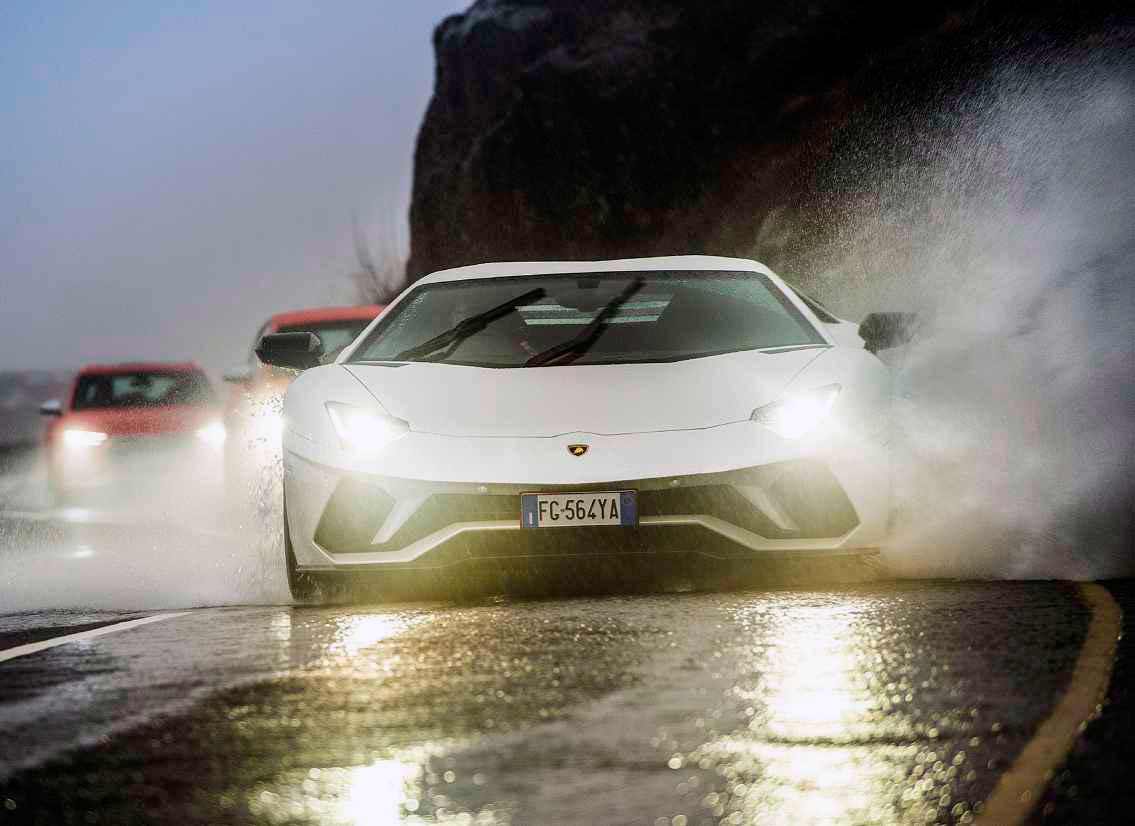
The chosen drive mode alters the default torque split to suit the sort of driving and roads that the selected mode is likely to be used for. In Strada (street), the suspension is compliant and the all-wheel drive at its most front-biased – 40:60, front:rear. Sport mode, intended for enthusiastic road driving, gives the greatest agility, using a firmer damper set-up, rear-steer and a maximum of 90 per cent of torque to the rear to deliver agility and even a little oversteer before stability control intervention.
Perhaps unexpectedly, more drive goes to the front wheels in Corsa (track) mode than in Sport, the assumption being that on a circuit the driver will want the fastest lap times and thus maximum traction. The dampers are wound up, the stability control is backed off more, and the V12’s torque output is split 20:80 front:rear. JB
TECHNICAL DATA FILE SPECIFICATIONS 2018 Lamborghini Aventador S
Engine V12, 6498cc
Power 730bhp at 8400rpm / DIN
Torque 509lb ft at 5500rpm / DIN
0-62mph 2.9sec (claimed)
Top speed 217mph (claimed)
Weight (dry) 1575kg (471bhp/ton)
Basic price UK 2018 £271,146
Drive-My rating 4.9
{module Lamborghini Aventador}
2018 Ford Focus RS MkIII C346-Type
‘Twinster’ allows Ford’s hot hatch to chart a different route
What makes the Focus’s all-wheel-drive system different is that, when drive to the rear is engaged, a small difference in gearing between the front and rear axles (less than two per cent) overspeeds the rear wheels. They turn a little faster, loading the rear and giving a rear-drive feel.
The key part in all this is the GKN ‘Twinster’ device that takes the place of the rear differential. The propshaft to it is always spinning, but the Twinster is only engaged when required, at which point its twin wet clutch packs – one for each rear wheel – are activated.
In steady-state running they are open, disconnecting the drive to the rear wheels, aiding economy but also essential because the difference in gearing would constantly try to rotate the rear wheels faster than the fronts. The Twinster also delivers one of the holy grails of drivetrain function: pure torque vectoring. The electronically controlled, hydraulically activated clutch packs send the appropriate torque independently to each rear wheel based on inputs such as steering wheel angle, lateral acceleration, yaw and speed. The moment the system senses rear-drive can help, torque is sent to the outer rear wheel. This speeds it up, rotating the Focus into the turn. Up to 100 per cent of the torque available at the rear can be sent to one wheel.
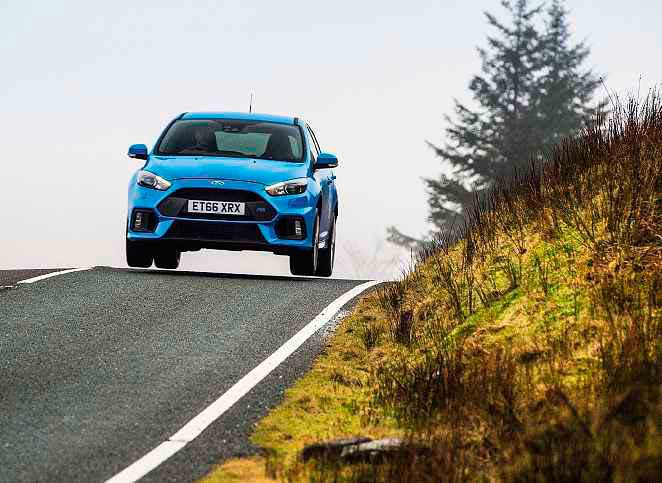
Electronic stability control systems typically manipulate a car’s balance by braking individual wheels, whereas the Focus’s system is enabling rather than restricting, adding positive torque rather than braking force. The degree of torque delivered to the rear wheels, and thus the attitude created, depends on the selected drive mode, from neutrality in Normal, to appreciably rear-drive in Track, and ultimately generous power oversteer in Drift. JB
TECHNICAL DATA FILE SPECIFICATIONS 2018 Ford Focus RS MkIII C346-Type
Engine In-line 4-cyl, 2261cc, turbo
Power 345bhp at 6000rpm / DIN
Torque 347lb ft at 2000-4500rpm / DIN
0-62mph 4.7sec (claimed)
Top speed 166mph (claimed)
Weight 1547kg (227bhp/ton)
Basic price UK 2018 £32,765
Drive-My rating 4.4
{module Ford Focus MkIII}
2018 Audi RS4 B9 Type 8W
Crowning glory of Audi’s all-wheel-drive system
Audi’s permanent all-wheel-drive systems were, for many years, built around the Torsen (torque sensing) centre differential. It was the defining quattro system. When the first RS5 launched in 2010, it introduced a different device for distributing torque, called the Crown Gear Differential. This is a compact unit built into the output end of the gearbox housing, where it splits the drive 40:60 front:rear, but this can automatically adjust to 15:85 or 70:30.
The unit comprises two crown wheels, one taking drive to the front axle and one to the rear, with a set of smaller differential gears between them. Drive from the engine comes into the centre of the unit and is transmitted to the front and rear crown gears via the differential gears. The diameter of the mating faces of each crown wheel to the differential gears gives the steady state-torque split, the rear being the bigger gear by a ratio of 60:40.
On the back of the rear crown wheel is a multi-plate wet clutch, and on the front crown wheel a slimmer version. When one axle loses traction and spins, there will be a difference in the speeds of the two crown wheels and this will cause the differential gears to rotate. This in turn will activate the clutch plates, which will try to match the speeds of the crown wheels, transferring torque to the non-slipping axle.
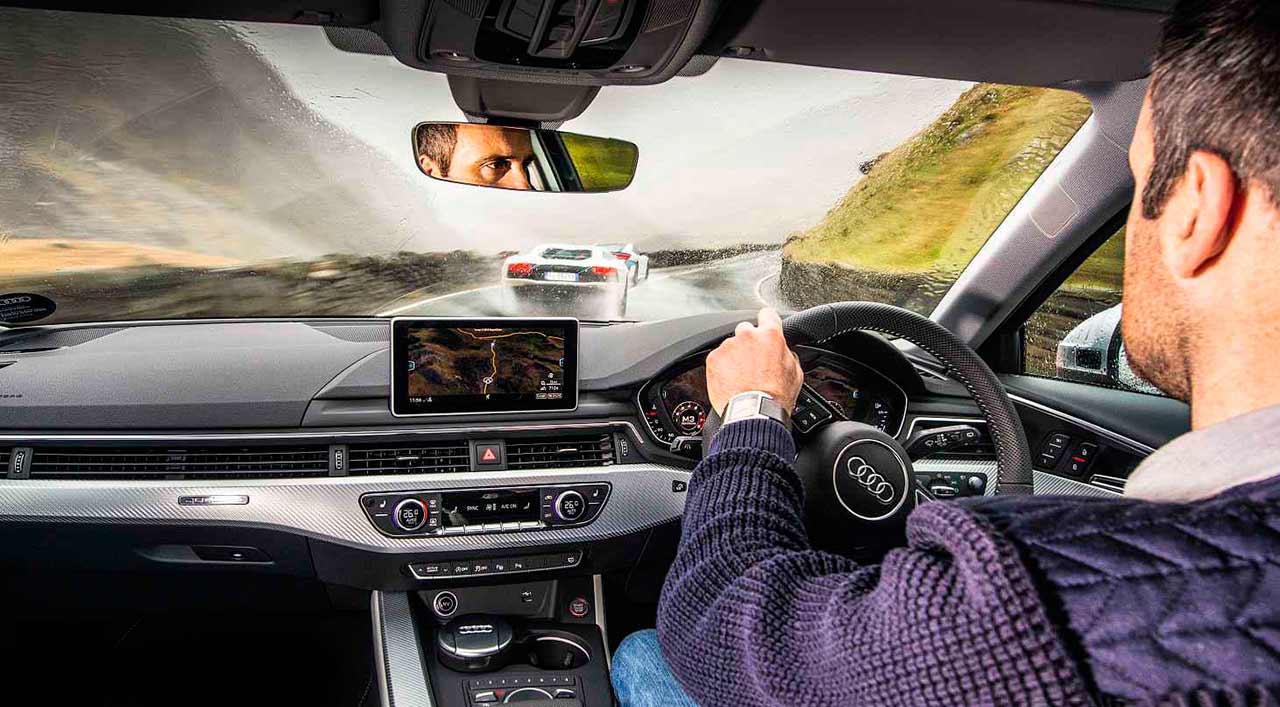
While the maximum split the unit can give the front or rear is less than 100 per cent, the RS4 can also use its stability control to slow the wheels on the slipping axle, sending even more drive to the axle with grip and increasing the drive on that axle to 100 per cent. Stability control-induced torque vectoring also takes place across the axles in cornering. JB
TECHNICAL DATA FILE SPECIFICATIONS 2018 Audi RS4 B9 Type 8W
Engine V6, 2894cc, twin-turbo
Power 444bhp at 5700-6700rpm / DIN
Torque 442lb ft @ 1900-5000rpm / DIN
0-62mph 4.1sec (claimed)
Top speed 155mph (limited)
Weight 1790kg (252bhp/ton)
Basic price UK 2018 £62,175
Drive-My rating 4.7
{module Audi A4 B9}
2018 Audi S1 Type 8X
Smallest Audi keeps things simple to deliver its thrills
The S1 has the simplest of Audi’s Quattro systems. In format, it’s very similar to previous on-demand, all-wheel-drive set-ups fitted to essentially front-wheel-drive Audis, and is commonly referred to as a ‘Haldex’ system. This is the name of the device that engages drive to the rear wheels. It is a compact, multi-plate wet clutch incorporated into the nose of the rear differential housing, and is activated by hydraulic pressure.
Early iterations of the system were reactive – slip had to be detected for them to operate. Also, the hydraulic pump was mechanically driven and low pressure, so the units were slow to respond. The S1 uses the fourth-generation Haldex, as seen in the previous-generation TT. Gen four and five Haldex use an electric pump that builds pressure from the moment the car is started, and run much higher pressure too, for a faster, finer response.
Unlike other versions, the S1’s system always sends some drive to the rear wheels. Also, fuller activation does not depend on seeing slip at the front wheels; there’s a predictive element, the controller analysing inputs from various sensors – throttle position, steering angle, etc – to recognise situations when all-wheel drive may be required and pre-emptively send more torque to the rear wheels. The amount of pressure applied to the clutch determines how much torque goes to the rear, and a maximum of 50 per cent of the engine’s available output can be sent there.
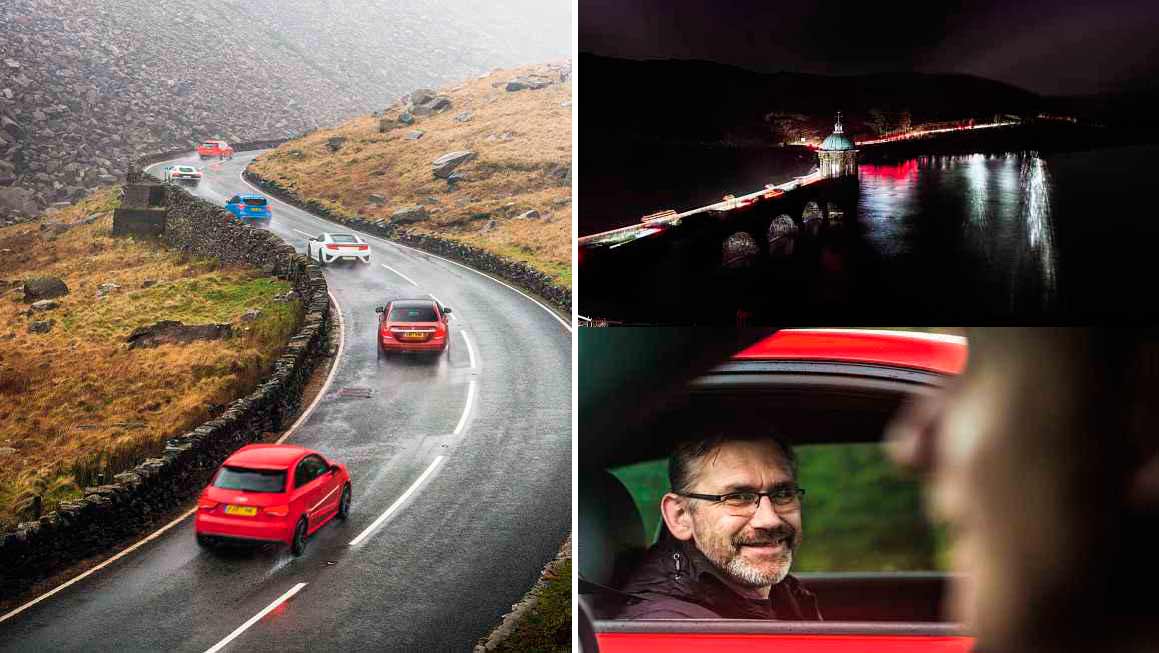
At both ends, torque is fed to the wheels through an open differential. However, the S1 has a stability control function called ELD – Electronic Locking Differential – which is a virtual limited-slip differential. Conventionally, if one wheel on an axle is slipping, the torque will bleed away through that wheel. ELD applies the brake on the slipping wheel, which results in torque being sent to the opposite wheel.
It’s not sophisticated, but it is a simple and effective solution. Indeed, that’s a description that applies to the Haldex all-wheel-drive system, too: it’s a relatively simple, satisfactory system for delivering enhanced traction and stability. JB
TECHNICAL DATA FILE SPECIFICATIONS 2018 Audi S1 Type 8X
Engine In-line 4-cyl, 1984cc, turbo
Power 228bhp at 6000rpm / DIN
Torque 273lb ft at 1600-3000rpm / DIN
0-62mph 5.8sec (claimed)
Top speed 155mph (limited)
Weight 1315kg (176bhp/ton)
Basic price UK 2018 £27,125
Drive-My rating 4.8
{module Audi A1}
2018 Honda NSX / Acura NSX second generation
Electric motors bring an extra dimension to Japanese supercar
The NSX has what Honda snappily titles Sport Hybrid SH-AWD, or Super Handling All-Wheel Drive. The mid-engined NSX supplements its twin-turbo V6 with three electric motors: one driving each front wheel and a third ‘direct-drive’ motor slotted between the engine and gearbox. The latter also acts as the starter motor, eliminating the need for the 12V starter and ring-gear system, saving weight.
Largely, the masses of the electrical system are centrally located, the controller managing battery charge and discharge filling what would be the transmission tunnel, while the lithium-ion battery pack sits transversely behind the seats. The output of the electric motors totals 119bhp, and they have a significant impact on getting the 1776kg NSX to 62mph in just 2.9 seconds – electric motors produce their maximum torque from zero revs, don’t forget.
Meanwhile, the front-axle motors deliver torque directly and precisely to each front wheel, which is pure torque vectoring. Each motor can act independently, so for, say, turn-in agility, the motor of the inside front wheel could be unpowered, effectively braking that wheel, while the outer is under full power. The NSX’s electric motors positively power the front axle to influence the handling, rather than braking it. At the rear, tuned to match the front, is a torque-sensitive, multi-plate-type limited-slip differential that maximises the drive from the V6 and also offers stability under braking.
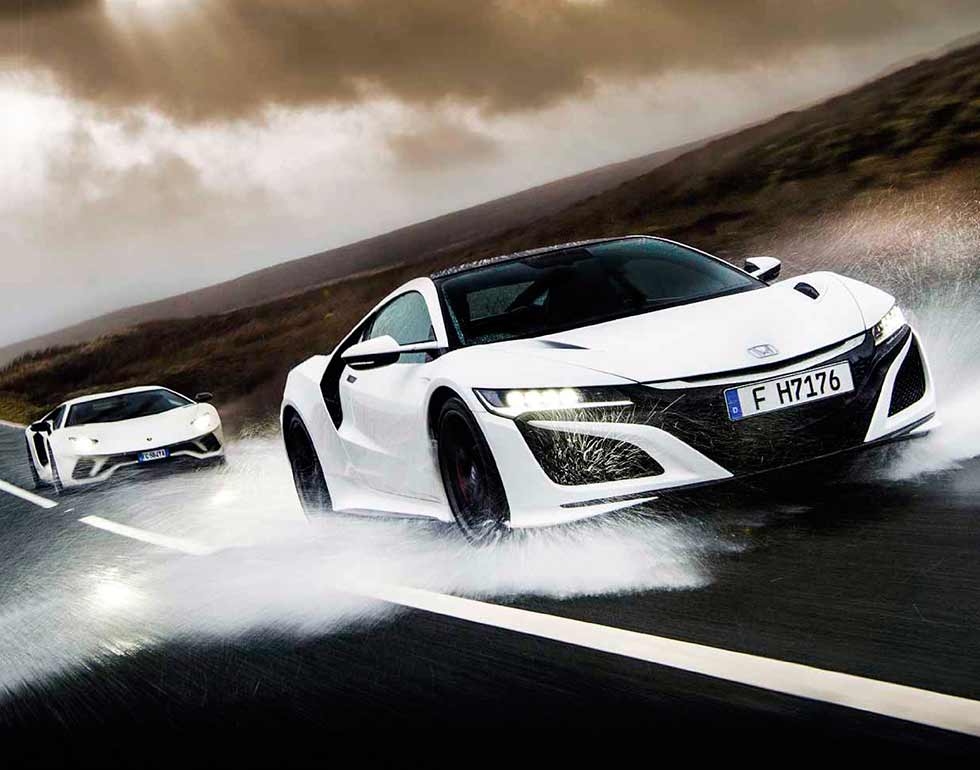
The third motor, sandwiched between the engine and gearbox, acts directly on the output shaft and, along with the front-axle motors, gives an initial kick that masks any turbo lag. And, because an electric motor is an alternator when driven, the motors recharge the battery on the overrun, taking a load off the brakes. JB
TECHNICAL DATA FILE SPECIFICATIONS 2018 Honda NSX / Acura NSX second generation
Engine V6, 3493cc, twin-turbo, plus 2 x 36bhp front electric motors and 47bhp rear electric motor
Power 573bhp (combined / DIN)
Torque 476lb ft at 2000rpm (combined / DIN)
0-62mph 2.9sec (claimed)
Top speed 191mph (claimed)
Weight 1776kg (328bhp/ton)
Basic price £144,765
Drive-My rating 5.0
{module Honda Acura NSX Mk2}
‘It’s one thing to describe how the systems work, it’s another to actually feel how they impact the driving experience’
‘If ever a car was made for getting around swiftly in these conditions, it’s the RS4’
‘Water blasts onto the slate walls, their jagged surfaces ready to impale the careless’
‘You tend to drive the Aventador hard up to a certain point, but always with a good margin in hand’
‘When the roads get really slippery, the Focus can start to feel surprisingly edgy at times’
‘The NSX accelerates like a Buccaneer off the Ark Royal’s catapult’
‘If the NSX is the future of four-wheel drive, it looks considerably brighter than the skies above us today’

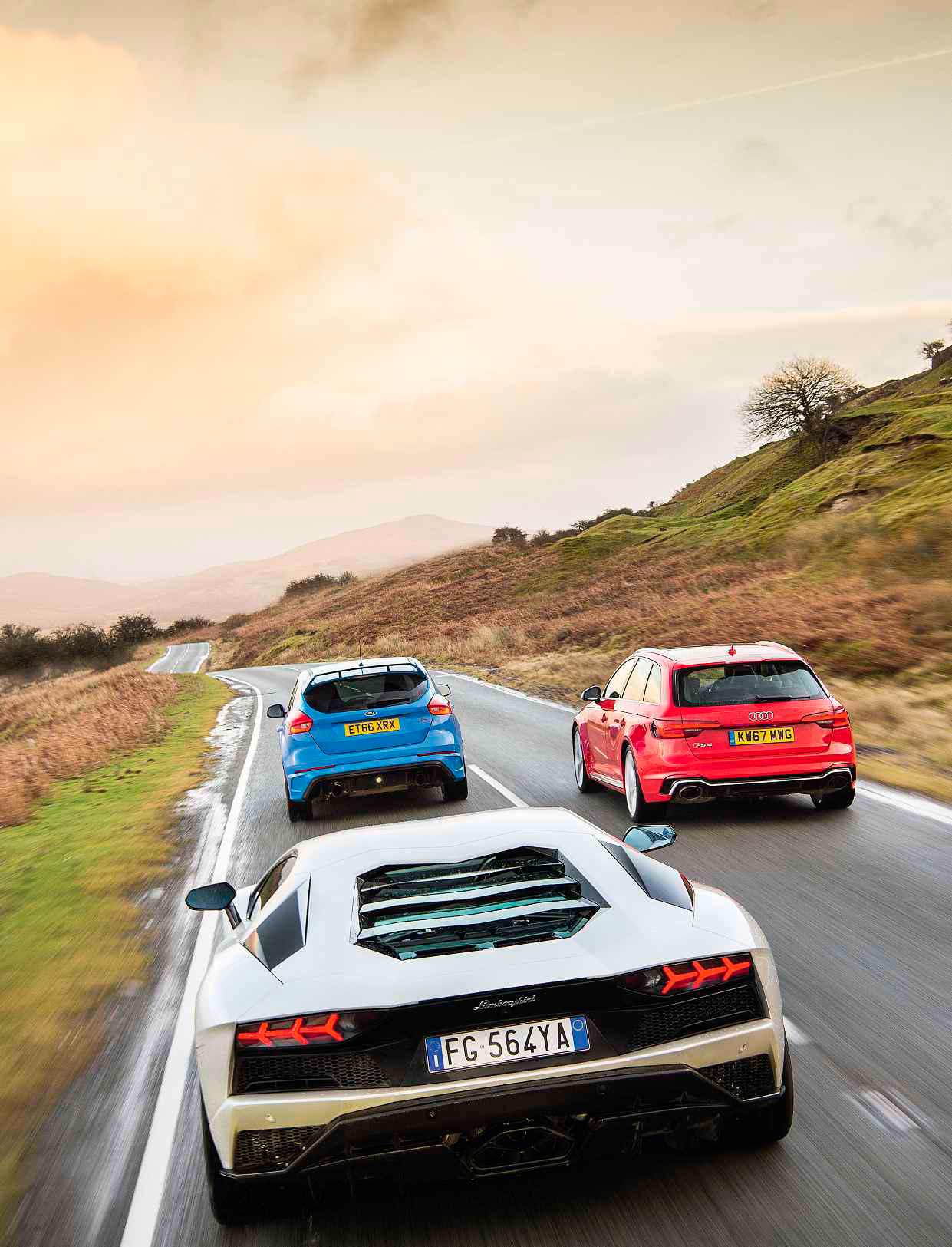
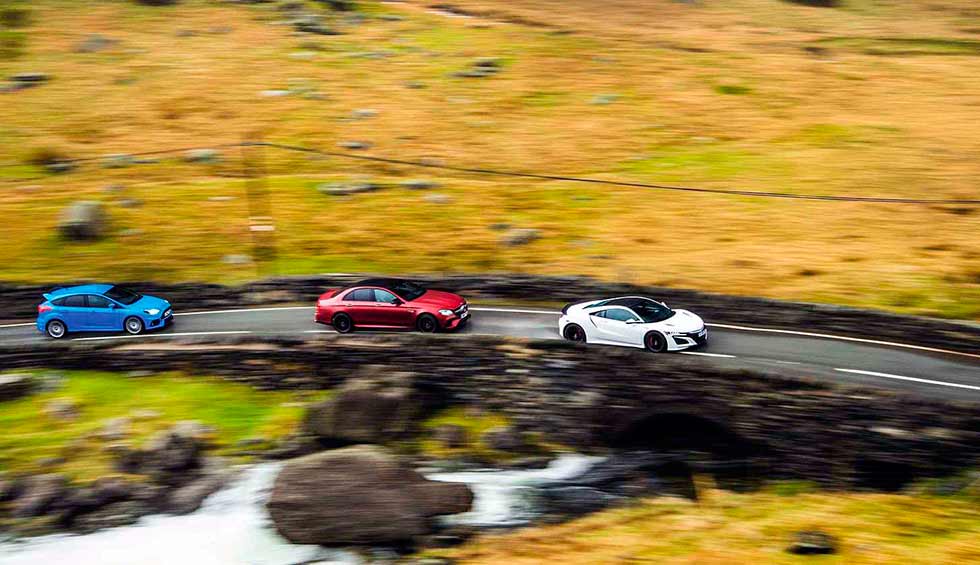

FOUR-WHEEL DRIVE v REAR-WHEEL DRIVE
4WD on track. Can the E63 S hang on to its own coat-tails in two-wheel-drive mode? Time to find out… Text and photos by James Disdale.
The track surface at Bedford Autodrome is glistening with freshly fallen rain, while the temperature readout on the dashboard is hovering around 7deg . We aren’t going to be setting any lap records today. Yet while conditions are far from ideal for establishing ultimate performance, they are spot-on for what we do have in mind.
The idea is fairly simple. Having appreciated the benefits of four-wheel drive over the past two days on our rain- lashed road trip, it’s now time to strap on the timing gear and hit the circuit to find out what the raw numbers have to say. How will we do that? As you know, the E63 S has the ability to run as either four- or rear-wheel drive, which means we can compare lap times for a car that is, to all intents and purposes, identical, apart from how many axles are being powered at any one time.

We go out for a few sighting laps first, just to see what we’re up against. It only takes a handful of corners to realise that this is going to be, erm, entertaining. The exits to most of the corners are slippery, while the entries to the quickish kinks of Club and Pif-Paf reveal black-ice levels of grip.
It’s four-wheel drive first. To keep things as fair as possible for both runs, I toggle the car into Race mode and disengage the stability control. Turning into the first corner, it’s clear the E63’s mass is going to require some careful management, as the nose struggles to keep the car hooked up to the apex. Getting hard on the power delivers the first surprise, as the AMG snaps into sudden power oversteer – this is not meant to be in the four-wheel-drive playbook. Apply corrective steering lock and keep your foot in, however, and torque is quickly, and slightly scrappily, sent to the front axle, allowing the E63 to thunder along the next straight.
Through the flick-flack of Club, the tail sways this way and that as it tries to deal with the combined demands of trail- braking and a quick direction change. Once again, you have to manage power oversteer on the exit, but only while the transmission composes itself.
Through the fast right-hander of Palmer Curves, with drive now being shared between all four wheels, the E63 feels stable and secure, allowing you to mash the throttle. The exit to the tight Bank left-hander once again brings the dance of a quick powerslide with rapid torque reshuffle, but is followed by a full-commitment blast down the next straight. After a couple of laps, we record a best of 1min 32.2sec.

A cooling-down lap, then it’s two- wheel-drive time. Engaging Drift mode requires you to simultaneously pull both aluminium gearshift paddles towards you, before tugging at the right-hand paddle to confirm your choice.
On the short run to the first corner it’s clear this is going to be trickier, as even in a straight line there’s heart-pounding wheelspin in fourth and fifth gears. The exits of the slower corners require a tiptoe approach, as even with a light throttle the AMG’s tail swings quickly sideways. It’s hilarious fun and fairly straightforward to control once you’ve caught the initial and sudden spike of oversteer, but it’s not fast.
After a couple of laps you discover that it’s best to take advantage of the E63’s prodigious torque and simply go a gear higher into and out of every corner than you would with all four wheels sharing the load. You still need to be on your guard, and through the ultra-slippy Pif-Paf and Bank it’s almost impossible to avoid oversteer from entry all the way to exit. It’s only through the fast sweeps of Palmer and O’Rouge that two-wheel drive isn’t at a disadvantage, with the car carrying similar speed regardless of transmission mode.
As you’d expect in these conditions, the two-wheel-drive lap is slower, the Merc crossing the finish line at 1min 35.3sec – more than three seconds slower.
In fairness, the E63 felt smoother and more natural in rear-wheel-drive mode, but against the clock, there’s no doubting the efficiency of four-wheel drive when the surface turns slippery.
Circuit Venue Bedford Autodrome, Bedfordshire, UK
Layout West Circuit Length 1.8 miles
Direction Anti-clockwise
Conditions Wet, 7deg C
